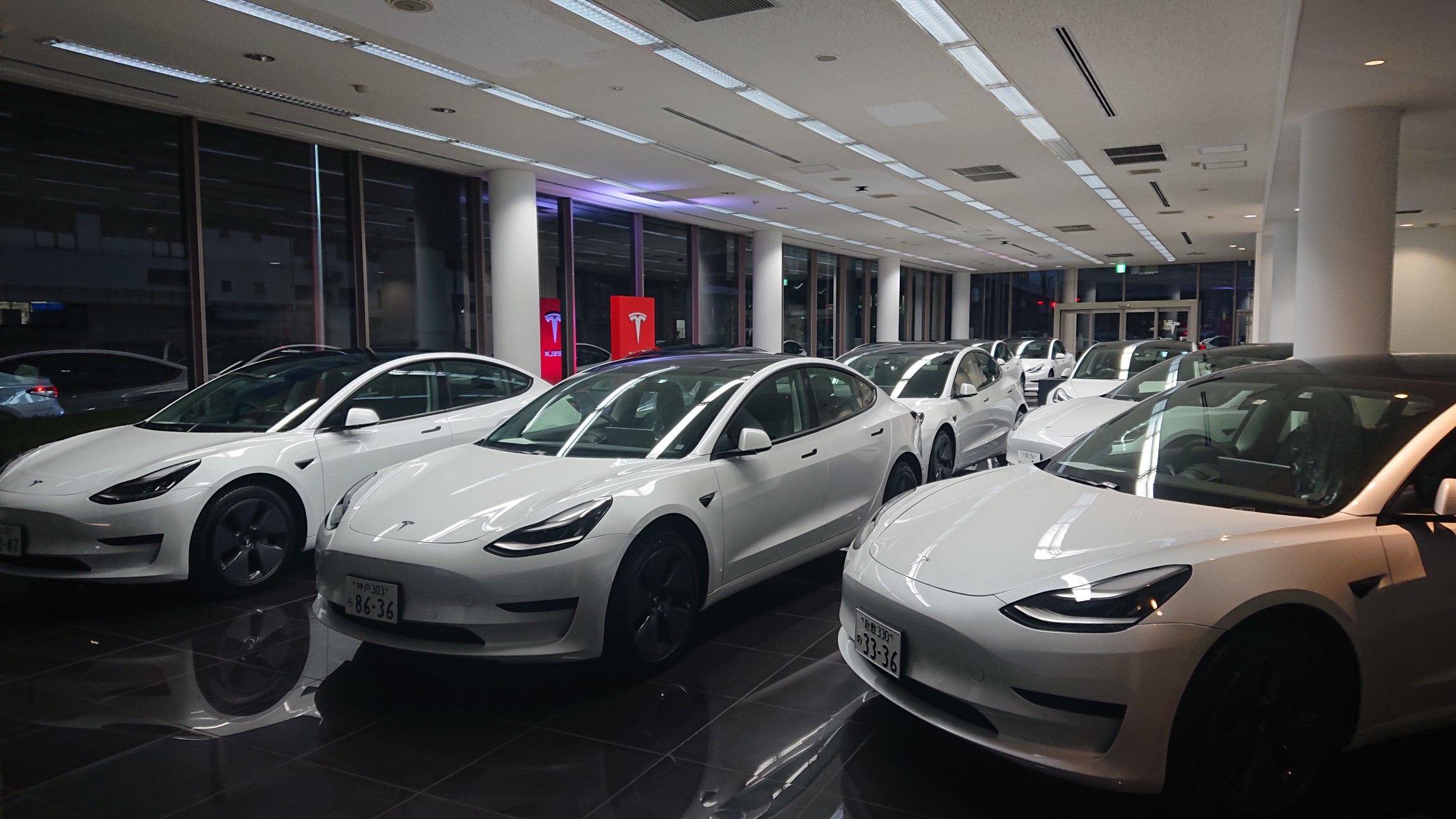
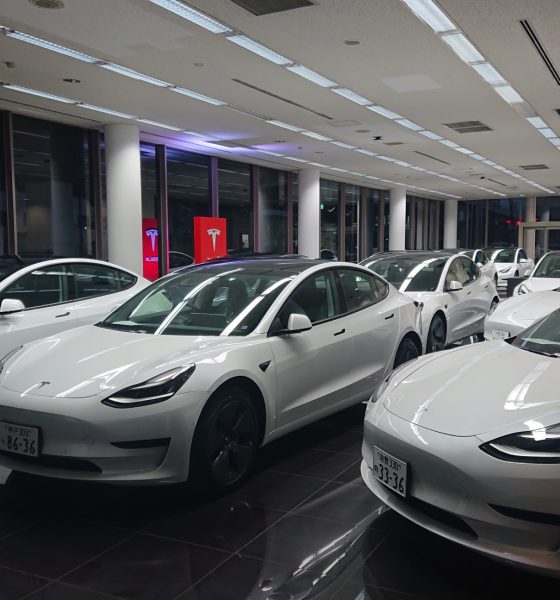
News
Tesla may not sell Giga Shanghai-produced cars in India: Road Transport Minister
Indian Road Transport Minister Nitin Gadkari nailed the point that Tesla will not be able to export Giga Shanghai Model 3 and Model Y vehicles from China to India. It is the most recent development in Tesla’s road to sell and manufacture its vehicles in India, a process that has taken over four years to configure.
Gadkari has been in contact with Tesla officials for several days, he says. However, he has repeatedly told the company’s executives that cars sold in the Indian market must be manufactured there, and the government will not accept any imports from other countries. Tesla has established its Chinese production facility, known as Giga Shanghai, as somewhat of an export hub in 2021. It all began in January when the automaker went back on its word that it would not ship China-built cars to Europe to handle demand spikes.
The company sent 7,000 Model 3 units to other countries from China within the first two weeks of the New Year. Then, the Model Y started being shipped to Europe from Giga Shanghai just last month, as Tesla’s European Gigafactory, known as Giga Berlin, has not yet been completed. However, European demand for the Model Y convinced the automaker to abandon its non-export stance, and Shanghai has supported both the Chinese market and some parts of the European market for months.
Most importantly, Gadkari is in no way trying to make things more difficult for Tesla to enter the market. Instead, he is making it a fair playing field for both the automaker and the country, which ultimately both need to benefit from the potential partnership. Gadkari told Tesla that any of the company’s needs would be taken care of by the Indian Government, the automaker just needs to manufacture its vehicles domestically.
“I have told Tesla that don’t sell electric cars in India which your company has manufactured in China. You should manufacture electric cars in India, and also export cars from India,” Gadkari told Hindu Stan Times. “Whatever support you (Tesla) want, will be provided by our government.” Gadkari also stated that there are ongoing discussions concerning Tesla’s requested tax rollbacks on imports.
Since India and Tesla have started to more seriously consider the advantages of building the world’s best electric cars in the country, there has been a hypothetical game of “Chicken” going on. Tesla was granted business licenses to sell and build electric cars in the region in the early parts of 2021, and it seemed that the expansive team of Tesla executives the company put together for India all but solidified that Elon Musk’s EV company would be present in the country in the coming months. However, Tesla wished to test demand for its cars through imports, a strategy that India’s politicians were not keen on, especially considering they are unwilling to move away from business practices that would favor manufacturing in other countries.
Tesla wants India’s government to consider lowering import taxes
Musk was not in favor of taking such a massive risk by building a production facility in India without knowing whether its vehicles would provide growth opportunities for the company. Tesla is riding a streak of eight consecutive profitable quarters, with its ninth expected to take place after the conclusion of Q3 2021. Financials, growth, and profitability are currently in the company’s best interest, of course. However, building a possibly $1 billion production plant in a market that it has never tested would essentially be a huge risk that could end up as a catastrophic failure.
It is only a safe business practice and strategy for Tesla to save potentially billions of dollars on a project that may not be successful. However, it is an advantage of Tesla’s to have such strong support from India’s government, especially as the company begins to expand into markets that are not necessarily EV hotspots.
Don’t hesitate to contact us with tips! Email us at tips@teslarati.com, or you can email me directly at joey@teslarati.com.

News
Tesla dominates in the UK with Model Y and Model 3 leading the way
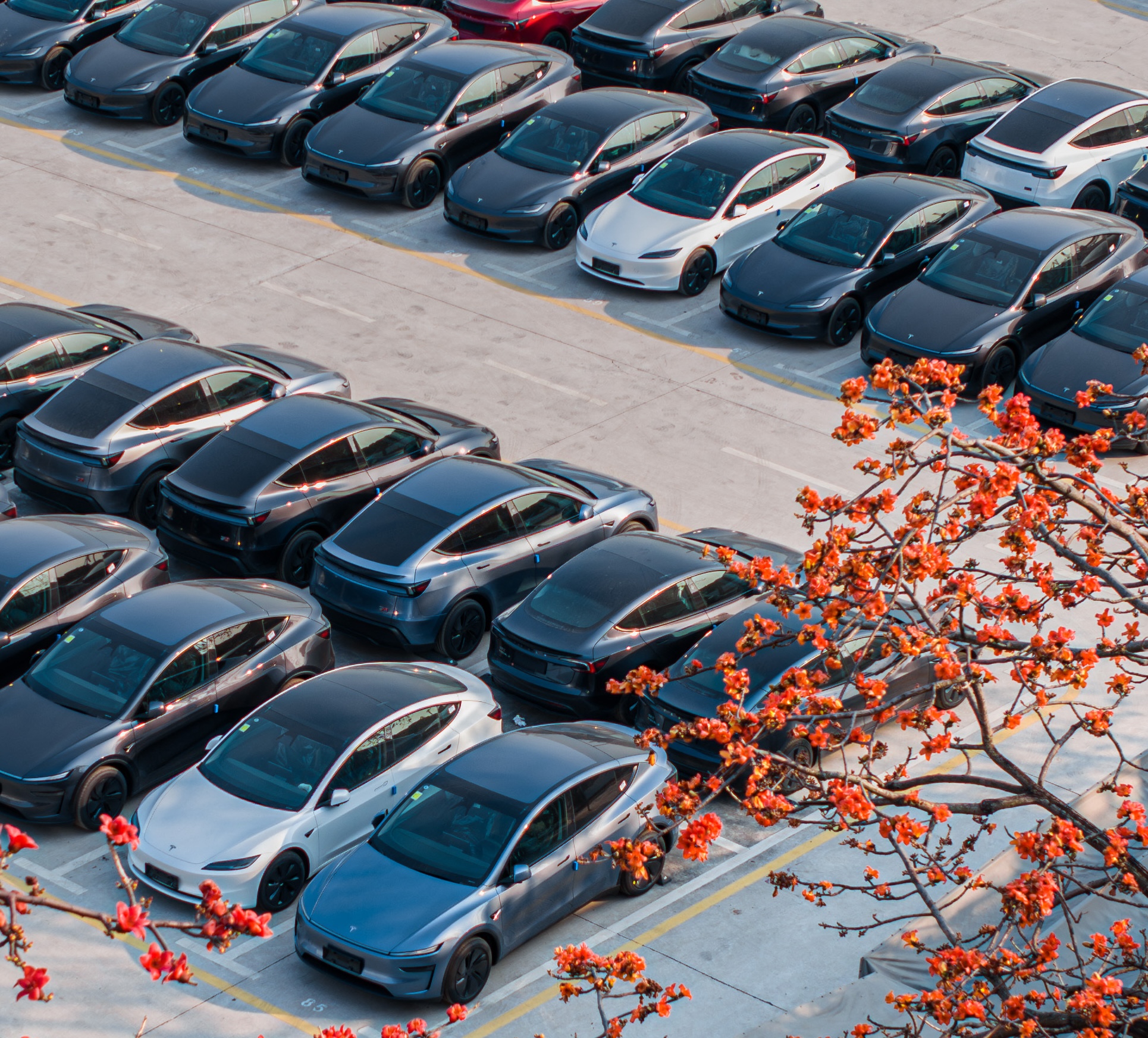
Tesla is dominating in the United Kingdom so far through 2025, and with about two weeks left in the year, the Model Y and Model 3 are leading the way.
The Model Y and Model 3 are the two best-selling electric vehicles in the United Kingdom, which is comprised of England, Scotland, Wales, and Northern Ireland, and it’s not particularly close.
According to data gathered by EU-EVs, the Model Y is sitting at 18,890 units for the year, while the Model 3 is slightly behind with 16,361 sales for the year so far.
The next best-selling EV is the Audi Q4 e-tron at 10,287 units, lagging significantly behind but ahead of other models like the BMW i4 and the Audi Q6 e-tron.
GOOD NEWS 🇬🇧 Tesla is absolutely crushing the UK electric vehicle market in 2025 💥
The numbers are in, and the dominance is clear. With an impressive amount of 42,270 vehicles delivered year-to-date, the brand now commands a solid 9.6% market share of the total auto market 🆒… pic.twitter.com/dkiGX9kzd0
— Ming (@tslaming) December 18, 2025
The Model Y has tasted significant success in the global market, but it has dominated in large markets like Europe and the United States.
For years, it’s been a car that has fit the bill of exactly what consumers need: a perfect combination of luxury, space, and sustainability.
Both vehicles are going to see decreases in sales compared to 2024; the Model Y was the best-selling car last year, but it sold 32,610 units in the UK. Meanwhile, the Model 3 had reached 17,272 units, which will keep it right on par with last year.
Tesla sold 50,090 units in the market last year, and it’s about 8,000 units shy of last year’s pace. It also had a stronger market share last year with 13.2 percent of the sales in the market. With two weeks left in 2025, Tesla has a 9.6 percent market share, leading Volkswagen with 8 percent.
The company likely felt some impact from CEO Elon Musk’s involvement with the Trump administration and, more specifically, his role with DOGE. However, it is worth mentioning that some months saw stronger consumer demand than others. For example, sales were up over 20 percent in February. A 14 percent increase followed this in June.
News
Tesla Insurance officially expands to new U.S. state
Tesla’s in-house Insurance program first launched back in late 2019, offering a new way to insure the vehicles that was potentially less expensive and could alleviate a lot of the issues people had with claims, as the company could assess and repair the damage itself.
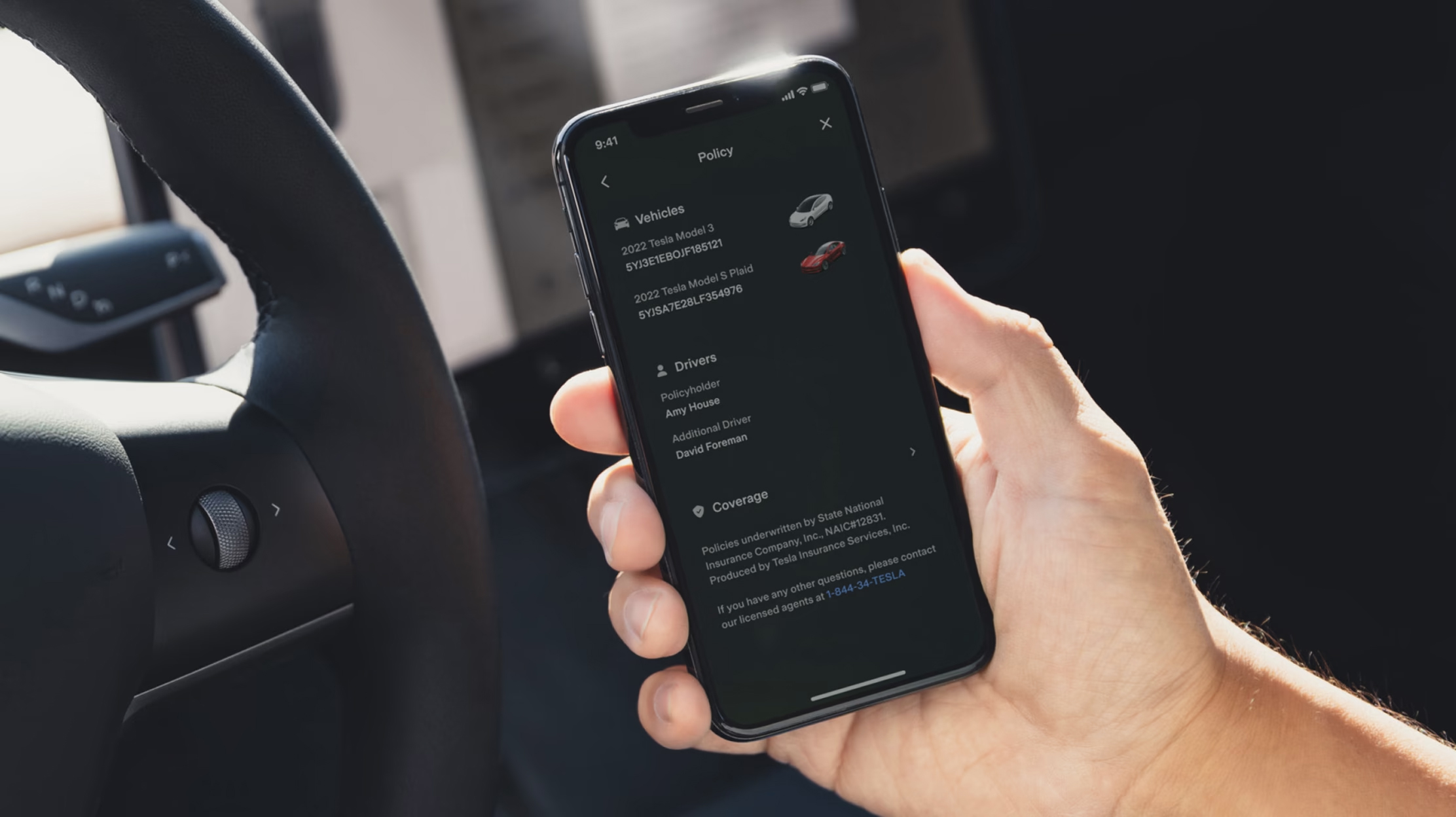
Tesla Insurance has officially expanded to a new U.S. state, its thirteenth since its launch in 2019.
Tesla has confirmed that its in-house Insurance program has officially made its way to Florida, just two months after the company filed to update its Private Passenger Auto program in the state. It had tried to offer its insurance program to drivers in the state back in 2022, but its launch did not happen.
Instead, Tesla refiled the paperwork back in mid-October, which essentially was the move toward initiating the offering this month.
BREAKING: Tesla Insurance has just officially launched in Florida.
This is the first new state to receive @Tesla Insurance in more than 3 years. In total, Tesla insurance is now available in 13 U.S. states (map in thread below of all the states).
Tesla Insurance in Florida uses… pic.twitter.com/bDwh1IV6gD
— Sawyer Merritt (@SawyerMerritt) December 17, 2025
Tesla’s in-house Insurance program first launched back in late 2019, offering a new way to insure the vehicles that was potentially less expensive and could alleviate a lot of the issues people had with claims, as the company could assess and repair the damage itself.
It has expanded to new states since 2019, but Florida presents a particularly interesting challenge for Tesla, as the company’s entry into the state is particularly noteworthy given its unique insurance landscape, characterized by high premiums due to frequent natural disasters, dense traffic, and a no-fault system.
Annual average premiums for Florida drivers hover around $4,000 per year, well above the national average. Tesla’s insurance program could disrupt this, especially for EV enthusiasts. The state’s growing EV adoption, fueled by incentives and infrastructure development, aligns perfectly with Tesla’s ecosystem.
Moreover, there are more ways to have cars repaired, and features like comprehensive coverage for battery damage and roadside assistance tailored to EVs address those common painpoints that owners have.
However, there are some challenges that still remain. Florida’s susceptibility to hurricanes raises questions about how Tesla will handle claims during disasters.
Looking ahead, Tesla’s expansion of its insurance program signals the company’s ambition to continue vertically integrating its services, including coverage of its vehicles. Reducing dependency on third-party insurers only makes things simpler for the company’s automotive division, as well as for its customers.
News
Tesla Full Self-Driving gets sparkling review from South Korean politician
“Having already ridden in an unmanned robotaxi, the novelty wasn’t as strong for me, but it drives just as well as most people do. It already feels like a completed technology, which gives me a lot to think about.”
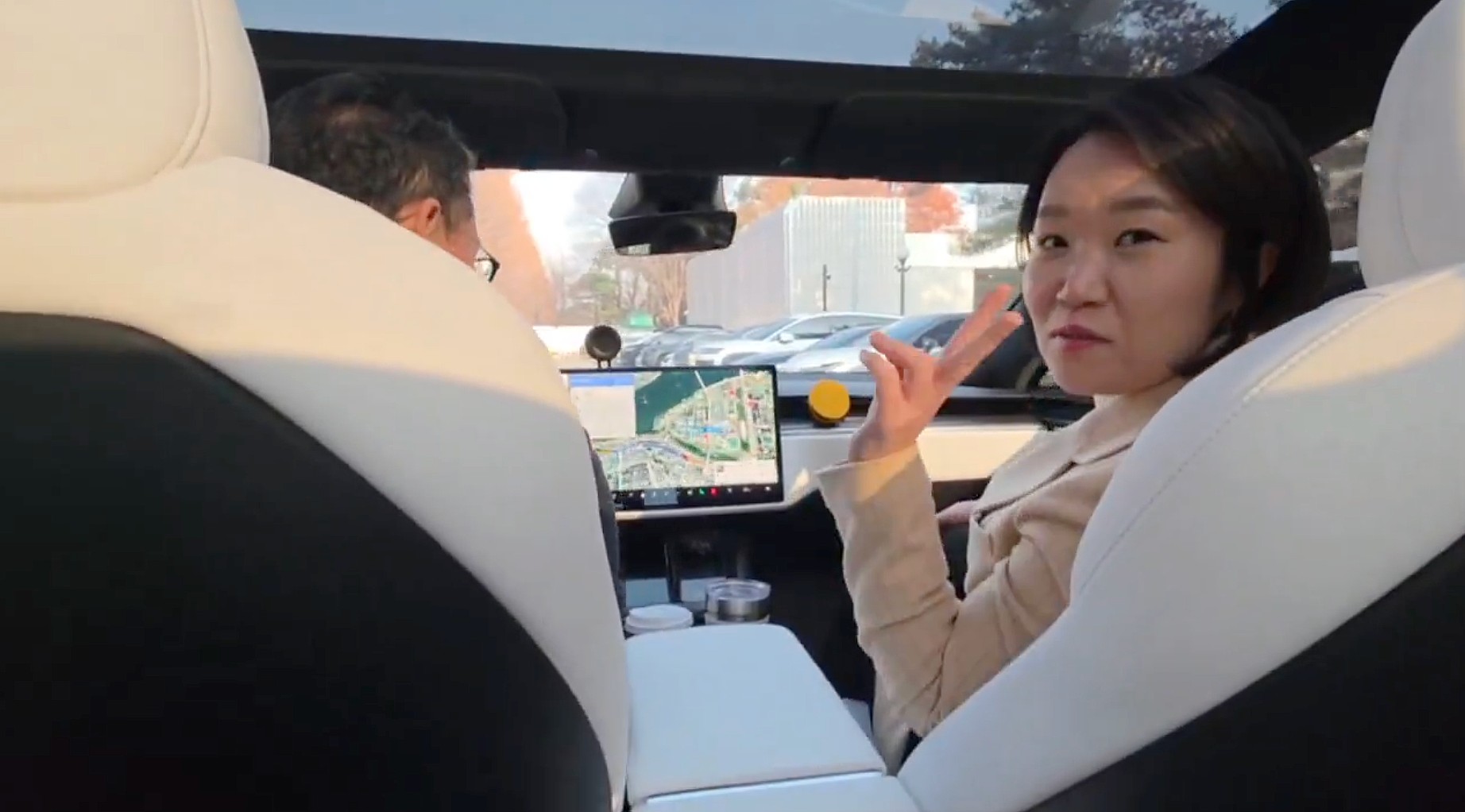
Tesla Full Self-Driving got its first sparkling review from South Korean politician Lee So-young, a member of the country’s National Assembly, earlier this week.
Lee is a member of the Strategy and Finance Committee in South Korea and is a proponent of sustainable technologies and their applications in both residential and commercial settings. For the first time, Lee was able to utilize Tesla’s Full Self-Driving technology as it launched in the country in late November.
Her thoughts on the suite were complimentary to the suite, stating that “it drives just as well as most people do,” and that “it already feels like a completed technology.”
드디어 오늘, 서울에서 테슬라 FSD 체험 했습니다.
JiDal Papa님의 모델S 협찬에 힘입어^^ 파파님 정말 감사합니다.
국회 -> 망원시장 -> 홍익대 -> 국회 복귀 코스였고요.
이미 무인 로보택시를 타봐서 그런지 신기함은
덜했지만, 웬만한 사람만큼 운전을 잘하네요.이미 완성된 기술이라고… pic.twitter.com/8pAidHBpRG
— 이소영 국회의원 (Soyoung Lee) (@im_soyounglee) December 17, 2025
Her translated post says:
“Finally, today I got to experience Tesla FSD in Seoul. Thanks to the Model S sponsored by JiDal Papa^^, I’m truly grateful to Papa. The route was from the National Assembly -> Mangwon Market -> Hongik University -> back to the National Assembly. Having already ridden in an unmanned robotaxi, the novelty wasn’t as strong for me, but it drives just as well as most people do. It already feels like a completed technology, which gives me a lot to think about. Once it actually spreads into widespread use, I feel like our daily lives are going to change a lot. Even I, with my license gathering dust in a drawer, don’t see much reason to learn to drive a manual anymore.”
Tesla Full Self-Driving officially landed in South Korea in late November, with the initial launch being one of Tesla’s most recent, v14.1.4.
It marked the seventh country in which Tesla was able to enable the driver assistance suite, following the United States, Puerto Rico, Canada, China, Mexico, Australia, and New Zealand.
It is important to see politicians and figures in power try new technologies, especially ones that are widely popular in other regions of the world and could potentially revolutionize how people travel globally.








